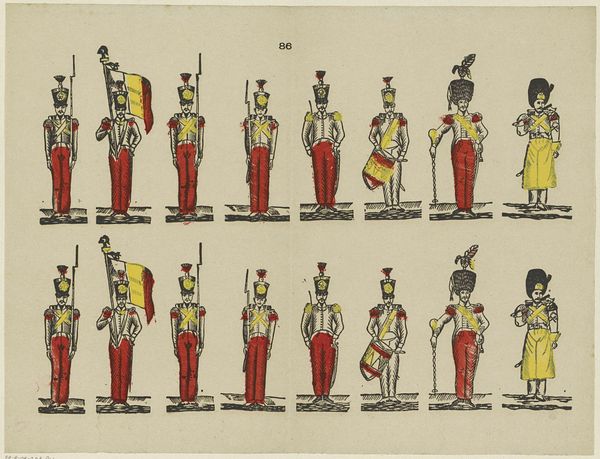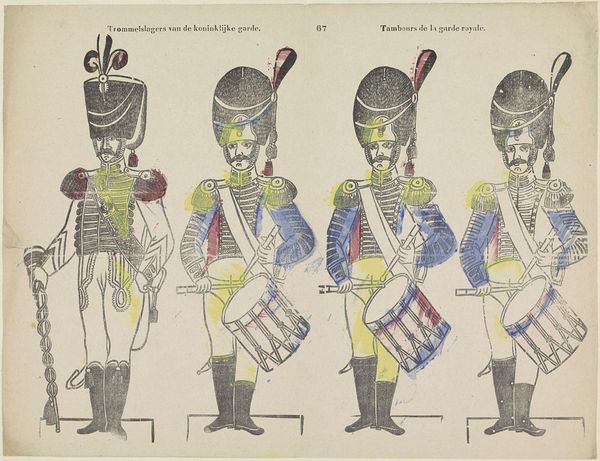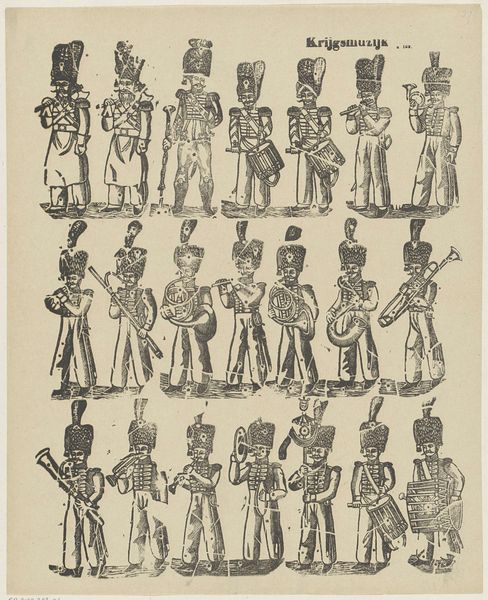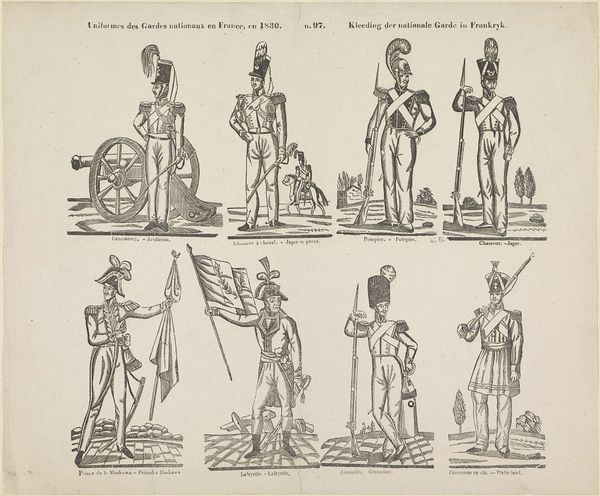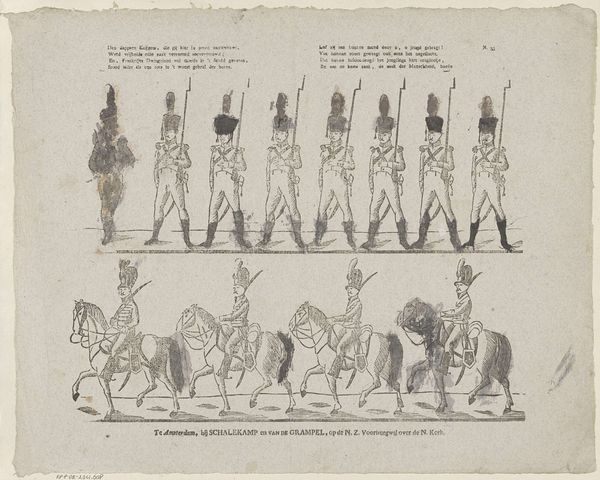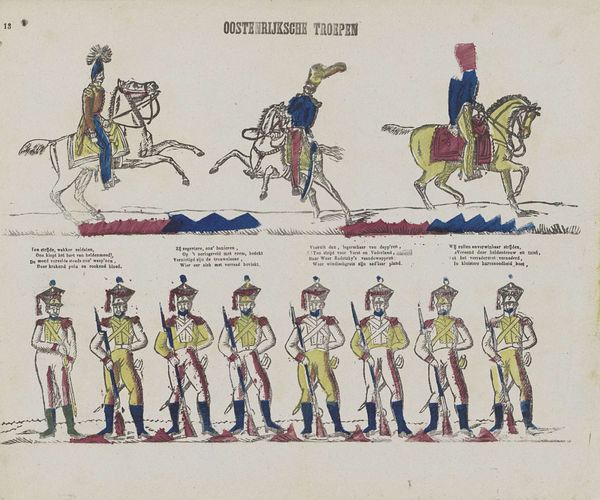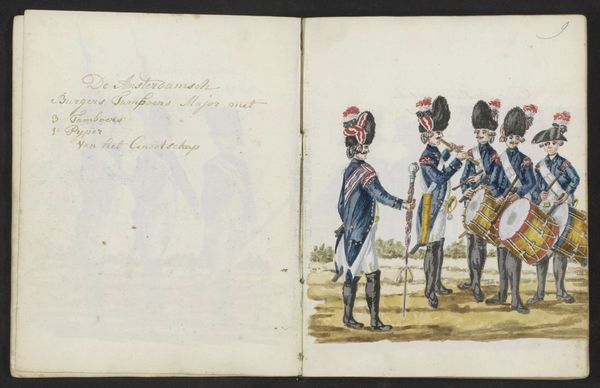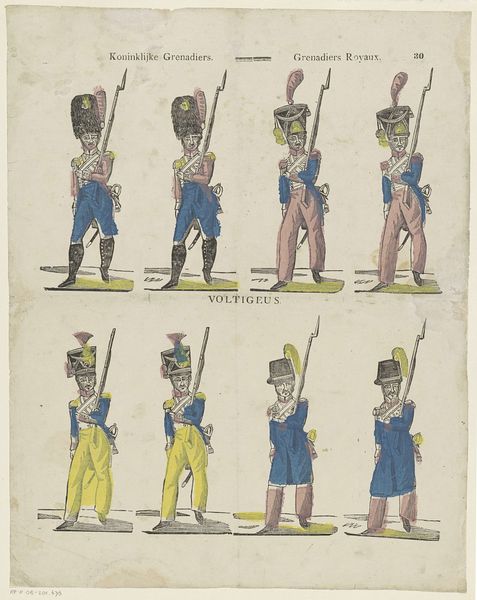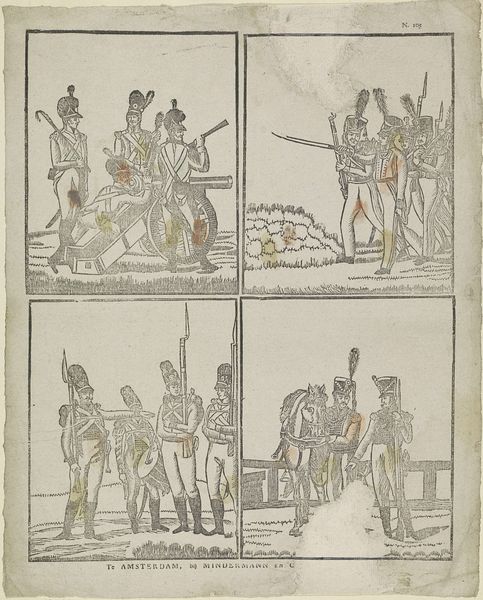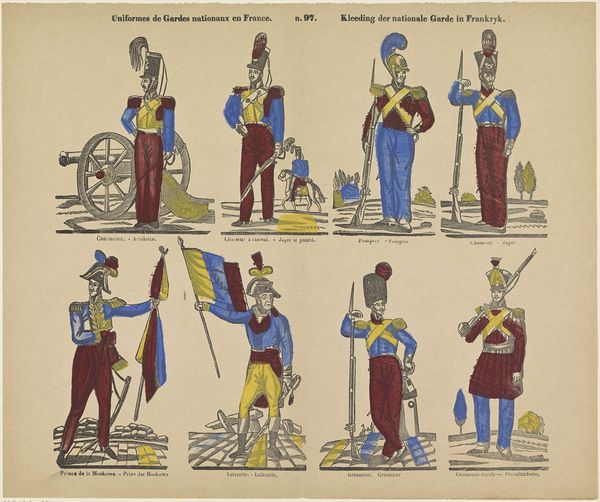
drawing, print
#
portrait
#
drawing
# print
#
figuration
#
history-painting
#
academic-art
Dimensions: height 335 mm, width 437 mm
Copyright: Rijks Museum: Open Domain
Editor: This is "Grenadiers der Koninglijke Garde," made between 1836 and 1849 by D. Lijsen. It's a drawing or print depicting four soldiers. I'm struck by the muted tones and the precision of the lines; it feels very formal and regimented. What catches your eye when you look at this work? Curator: Primarily, the ordered repetition. Four figures, near identical, rendered with unwavering line work and restrained coloration. Observe how the artist establishes a rhythmic structure. What might we learn from that strict composition? Editor: The repetition suggests a uniformity, I guess? But how do you interpret the limited use of color? Just those dabs of red and blue? Curator: Indeed, those controlled daubs draw our focus, and serve as visual anchors. They bisect each grenadier in comparable regions. Now, consider the semiotic load these colors might bear. Editor: So, not just decoration? Is it symbolic? The Netherlands flag? Curator: A compelling point. While representational parallels may exist, it is crucial to note how this enhances or diminishes the artwork's self-contained, formal qualities. The line quality also appears… practical. Do you find any areas where the artist varied their technique? Editor: Not really. It's consistently detailed but not very expressive. This piece presents its subjects in a somewhat detached, clinical way. Curator: Precisely. A sense of removed objectivity pervades, directing attention toward form, structure, and deliberate construction. The artist presents each soldier as components of the regalia they bear. This isn't only a depiction of a soldier; it’s a study of components that communicate "soldier." Editor: I see. By focusing on these artistic qualities, we bypass simply identifying the historical or cultural background and look more deeply at the choices made by the artist. Thank you. Curator: The pleasure was mine. Remember that artworks offer a discourse through their compositional grammar, and visual syntax—independent of time and place.
Comments
No comments
Be the first to comment and join the conversation on the ultimate creative platform.
